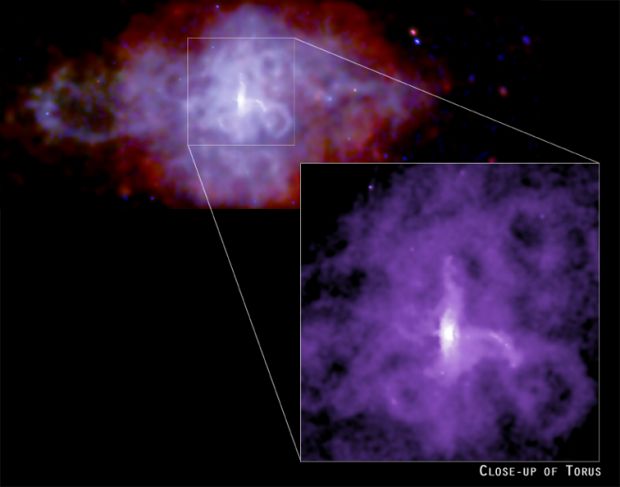
|
Explanation: Light from a star that exploded some ten thousand light-years away first reached our fair planet in the year 1181. Now known as supernova remnant 3C58, the region seen in this false-color image glows in x-rays, powered by a rapidly spinning neutron star or pulsar - the dense remains of the collapsed stellar core. A cosmic dynamo with more mass than the sun, the pulsar's electromagnetic fields seem to accelerate particles to enormous energies, creating the jets, rings, and loop structures visible in this stunning x-ray view from the orbiting Chandra Observatory. While adding 3C58 to the list of pulsar powered nebulae explored with Chandra, astronomers have deduced that the pulsar itself is much too cool for its tender years, citing 3C58 as a show case of extreme physics not well understood. The close-up inset above spans about six light-years.
|
January February March April May June July August September October November December |
| ||||||||||||||||||||||||||||||||||||||||||||||||
NASA Web Site Statements, Warnings, and Disclaimers
NASA Official: Jay Norris. Specific rights apply.
A service of: LHEA at NASA / GSFC
& Michigan Tech. U.
Based on Astronomy Picture
Of the Day
Publications with keywords: supernova remnant - pulsar - neutron star
Publications with words: supernova remnant - pulsar - neutron star
See also:
- APOD: 2025 October 1 Á NGC 6960: The Witchs Broom Nebula
- APOD: 2025 September 3 Á Cir X1: Jets in the Africa Nebula
- APOD: 2025 August 24 Á The Spinning Pulsar of the Crab Nebula
- APOD: 2025 June 9 Á Between Scylla and Charybdis: A Double Cosmic Discovery
- Supernova Remnant Cassiopeia A
- APOD: 2025 January 8 Á Supernova Remnants Big and Small
- APOD: 2024 September 18 Á The Mermaid Nebula Supernova Remnant
